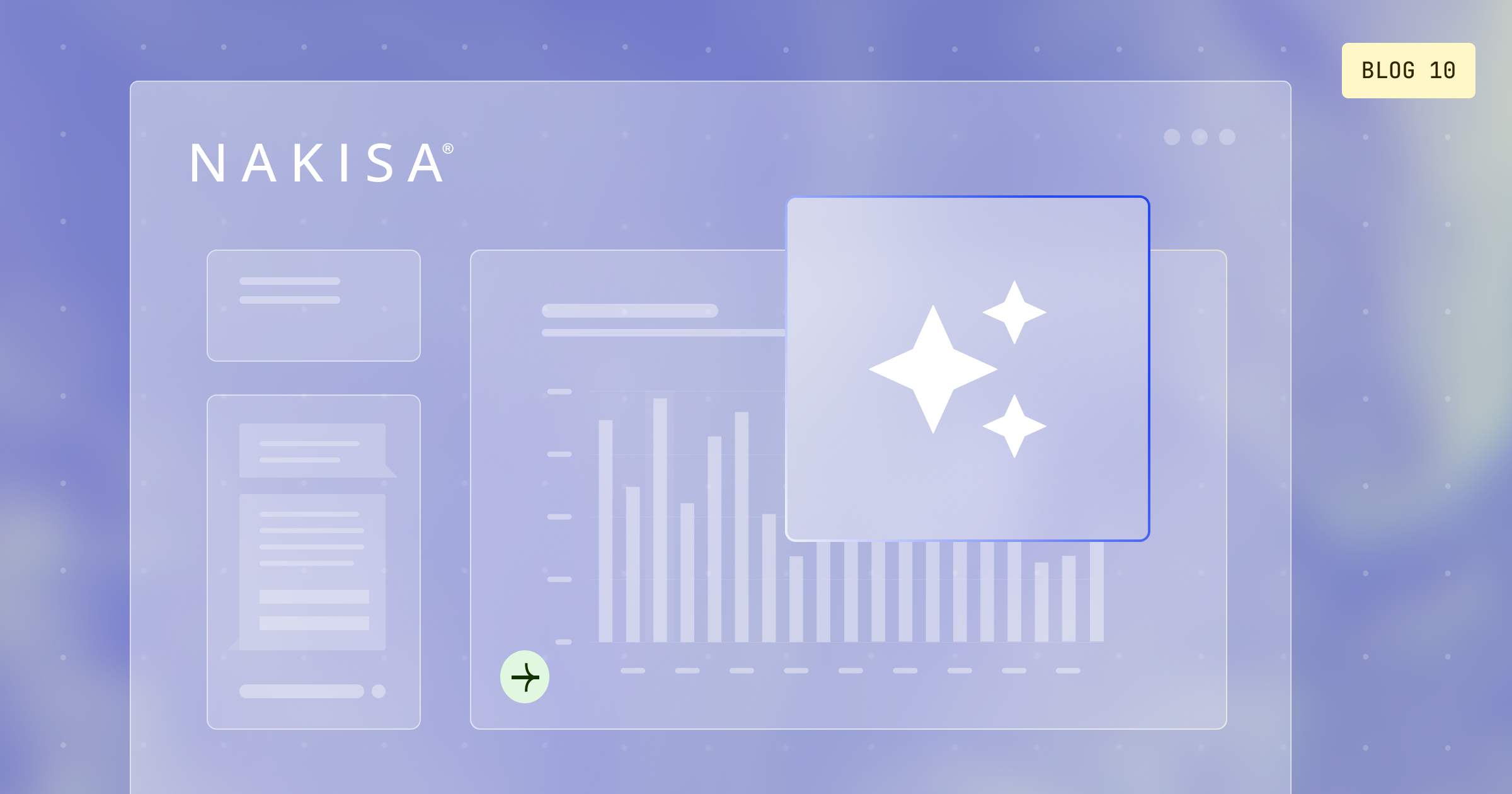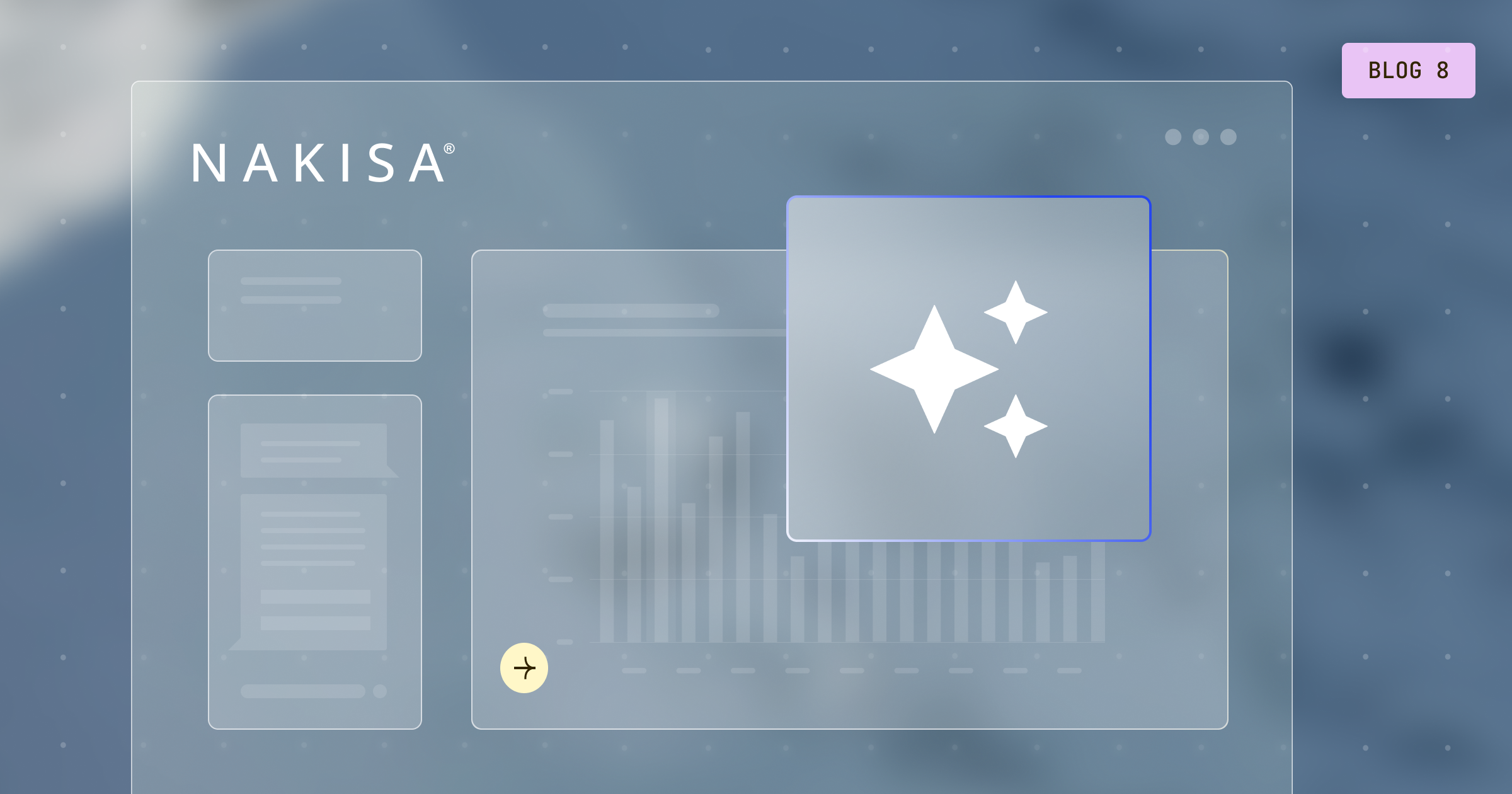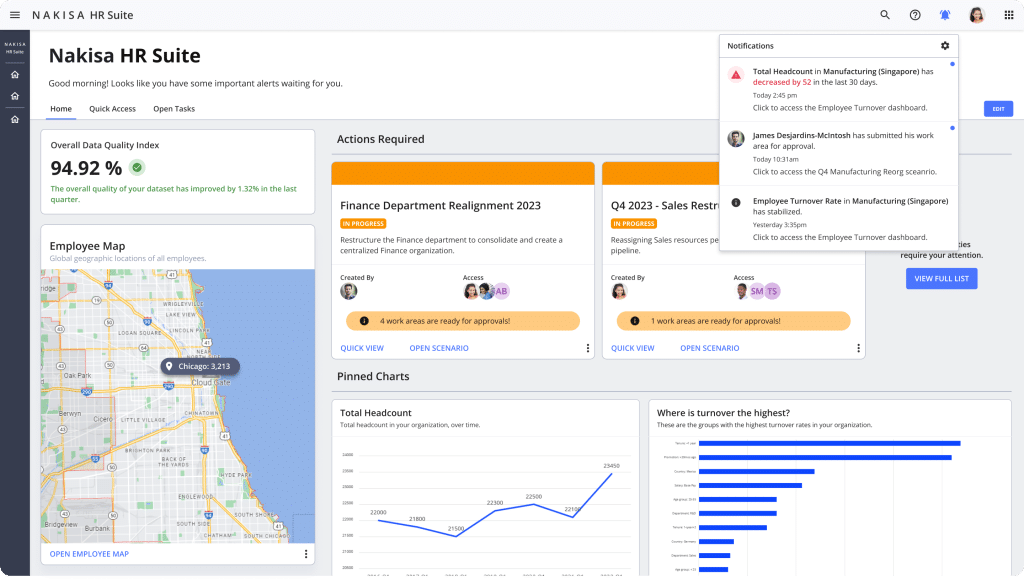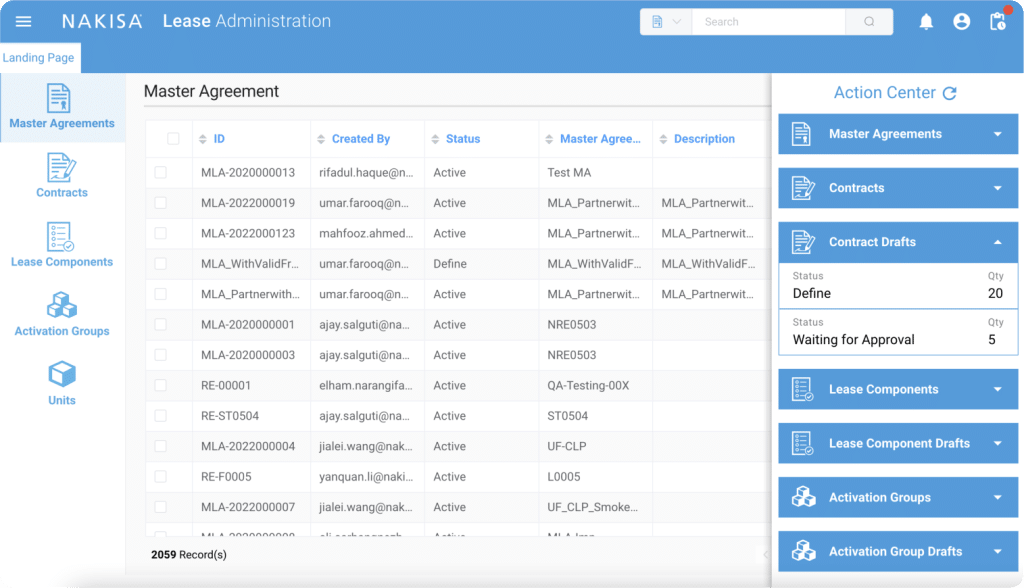What have been the most significant organizational design trends in the last few years?
Breaking with tradition by embracing the hybrid work model
The COVID-19 pandemic accelerated the adoption of hybrid work, redefining the traditional workplace norms. The 9-to-5 model, established in the 1920s, no longer aligns with modern work realities. Many organizations now embrace remote work and flexible schedules, having reconsidered the need for employees to be physically present in an office. This shift also prompts a reevaluation of physical workspace, prioritizing flexibility to support diverse work styles. Obviously, immense technological advancement played a role as well.

Source: https://www.statista.com/chart/27260/is-9-to-5-working-in-2022/
Shift towards agile and adaptive structures
Organizations are moving away from static, hierarchical models and embracing agile, adaptive structures to respond more quickly to market disruptions. Key components of this shift include:
- Agile pods: Smaller, self-managing teams or pods that can quickly address specific business needs, enabling timely responses.
- Team topologies: New team types, such as enabling, platform, and complicated subsystem teams, are being created to address specific organizational needs. This approach strikes a balance between employee empowerment and leadership guidance.
- Dedicated transformation teams: Teams focused solely on driving transformation enable faster execution of change initiatives.
- Test-and-learn organizations: Parallel structures that foster a culture of continuous learning and innovation by encouraging experimentation at all levels.
A central theme in these agile structures is enhancing organizational efficiency while fostering iterative and adaptive processes. While there may be an initial investment required to implement these systems, they eliminate the recurring setup costs commonly seen in traditional organizational design approaches.

Moving from organizations as machines, to organizations as organisms. By McKinsey & Company.
Emphasis on people over process
Another key trend is the increasing emphasis on people over process. Organizations are redesigning roles that allow employees to thrive and contribute, rather than forcing them to adjust to preset roles.
This shift manifests in several ways:
- Employee empowerment: Creating environments where employees feel valued, empowered, and motivated to achieve their full potential.
- Skill-based organizations: Designing roles and structures based on skills and competencies rather than traditional job titles.
- The rise of “learning organizations”: Many organizations now actively encourage and support ongoing skill development, fostering a culture of knowledge enrichment among employees.
What role does technology play in shaping organizational design, and how are companies leveraging tools to facilitate this?
Technology plays a critical role in enabling organizations to become more adaptable and fluid in achieving their strategic goals, with specialized tools enhancing visualization, decision-making, and efficiency.
Org and workforce visualization and analytics
Advanced organizational visualization software provides clear representations of organizational structures, people, and skills, enabling organizations to better understand their workforce and make informed decisions. Without these tools, companies would rely on ERP plugins, in-house tools, or non-specialized visualization apps such as Tableau to analyze and visualize data. Adding this additional layer between raw data and end users often creates inefficiencies, slows decision-making, and limits the ability to align workforce insights with strategic objectives.
By contrast, next-gen, specialized org design software offers capabilities essential for:
- See clear representations of reporting lines and team structures, even in the most complex organizations
- Explore relationships between roles, people, and skills
- Quickly spot gaps, overlaps, or unbalanced spans of control
- Filter and navigate large, complex organizational data
- Generate dynamic, interactive charts and dashboards for easy insight
How Nakisa helps with org visualization
Nakisa Org Chart, as part of the broader Nakisa Workforce Planning Portfolio, integrates directly with ERP and HCM (SAP, Oracle, Workday, PeopleSoft), giving leaders a single source of truth and always up-to-date visibility into their workforce. Configurable org chart views (through conditional formatting, advanced display options, etc.), detailed analytics, and powerful filters let users drill down into structures and spot inefficiencies with ease. Intuitive dashboards, including AI-generated ones built from natural language prompts, make insights more accessible. By turning complex workforce data into clear, actionable intelligence, Nakisa empowers organizations to make confident, data-driven decisions.
Org design and decision-making
Technology is becoming a critical enabler of effective organizational design. As organizations face constant change and increasingly complex structures, dedicated solutions are essential, for major reorganizations and enterprise-wide transformations, as well as day-to-day adjustments.
With modern enterprise-grade tools, organizations can simulate different design scenarios, model the impact of changes, and explore “what-if” situations before committing to transformations. AI-driven insights help identify inefficiencies, optimize spans of control, and highlight talent gaps, making decision-making faster and more precise. By integrating with HR, finance, and operational systems, these platforms allow cross-functional teams to collaborate seamlessly, ensuring that design decisions are aligned with business strategy and scalable for large, complex organizations.
Challenges and considerations
Implementing new organizational designs requires careful planning. Among the considerations that org design professionals must address:
- Balancing empowerment with leadership: Finding the right balance between empowering teams and providing adequate leadership, coaching, and support, while also ensuring proper governance with clear decision rights.
- Addressing competing priorities: Managing competing priorities effectively, especially when introducing dedicated transformation teams.
- Defining clear roles and responsibilities: Establishing clear roles and responsibilities to avoid confusion and conflict, especially in fluid and adaptable structures. This can also mean accounting for responsibility gaps that can fall between teams.
- Data integrity: Ensuring the accuracy and completeness of data for reliable and effective organizational design.
- Technology as a tool: Recognizing that technology is an enabler, not a standalone solution, and using it thoughtfully and strategically to achieve desired outcomes.
- Human-centered approach: Prioritizing how technology can create a workplace that supports and empowers employees.
What will be the next major shift in organizational design over the next five years?
Data, analytics, and AI as game-changers
Data analytics and AI are expected to become even more central to organizational design. On the macro level, organizations that effectively leverage these capabilities will be better positioned to identify workforce strengths and gaps, optimize organizational structures, and swiftly and effectively adapt to both sudden and gradual changes. AI-powered tools are not only expected to enhance practitioners’ efficiency and effectiveness but also likely create new processes and roles within and beyond organizational design field, as they analyze vast amounts of data to identify patterns and trends, provide real-time valuable insights, and facilitate skill analysis and planning.
For all the changes that AI could bring to organizational design and its practitioners, the panel unanimously agreed that AI will not replace employees. Instead, employees who effectively use AI will replace those who do not. As an example, HR specialists already use AI to streamline tasks such as CV screening – the specialists aren’t replaced, but they become more efficient.
How Nakisa is transforming org design with AI-first tools
AI is at the heart of Nakisa's vision for workforce analytics, org design, and workforce planning. Nakisa leverages agentic AI to provide real-time, data-driven insights and automate complex or routine tasks, empowering you to enhance strategy and operations.
Available as a standalone solution or embedded across our products, Nakisa Decision Intelligence (NDI) Platform unifies, interprets, and analyzes vast internal and external data across any system in real time. It goes beyond analysis by running forecasts, what-if simulations, and visualizations, while providing expert, context-aware guidance every step of the way, all through natural language prompts (text or voice). It doesn’t stop there; you can execute decisions instantly via Nakisa AI Agents and apply them directly to your ERP and HCM systems.
This is another step into becoming an AI-first company, on top of the existing AI Assistant that provides guidance and onboarding to users unfamiliar to the tool, as well as the AI Agents that help execute tasks such as dashboard creation, headcount planning, and org design change summaries. Each feature is made to enable HR teams, making them faster and more efficient, turning decision-making into a true driver of growth and competitive advantage.
Rise of expert generalists
As organizations adopt more fluid and adaptable models, there will likely be a rise in HR/org design expert generalists. These individuals possess a breadth of knowledge and skills across multiple domains, allowing them to meet a broader range of organizational needs. For example, in addition to being well-versed in organizational design, these individuals would also be proficient in data analysis and interpretation, digital transformation, and/or be able to integrate the latest AI technologies into their work of designing organizations. Critically, experts from other teams (i.e., non-HR departments) would also have to develop similar “side” skillsets that make them more proficient at (or at least able to facilitate) organizational design in addition to their key responsibilities. This shift would blur traditional reporting lines but ultimately benefit the organization as a whole. This wider trend is sometimes described as the need to develop “t-shaped skill profiles”.

How Nakisa is enabling the rise of expert generalists
Nakisa offers an intuitive, integrated platform, designed for in-house enterprise teams, that centralizes all aspects of organizational design, workforce planning, and analytics. As companies move toward more fluid, adaptable models, generalists can rely on one comprehensive solution to manage everything from data-driven insights to AI-driven planning, modeling, and execution with seamless collaboration. By bringing together HR and finance in a single environment, Nakisa enables these multi-skilled professionals to work seamlessly across domains, accelerating decisions and driving organizational agility.
Growing need for organizational design expertise
As a recognized profession, organizational design is still relatively new. However, its growing importance is driving demand for org design professionals, as well as advanced technology that facilitates their work. It’s worth noting that this growing demand of org design skills dovetails with the rise of in-house organizational design teams. Increasingly, companies and other organizations are accepting that change is constant and are adopting the approach of having full-time org design teams on the payroll as opposed to hiring external consultants to lead org transformations at irregular intervals or singular moments.
How Nakisa supports in-house org design teams
Nakisa’s powerful yet intuitive Strategic Org Design (SOD) gives enterprise in-house teams everything they need to design, test, and execute transformations confidently. Built with usability in mind, it combines deep analytical power with an approachable interface that teams can quickly and easily adopt.
It is paired with Nakisa Decision Intelligence (NDI), that delivers AI-driven insights and contextual recommendations that guide every step of the org design process. With natural language prompts, users can simply ask questions or describe what they need and instantly get expert-level insights, visualizations, or scenario options. The interface is intuitive and conversational, making complex analysis and modeling accessible to anyone, with no technical background required. Together, SOD and NDI accelerate decision-making, simplify daily workflows, and empower teams to move from insight to action faster than ever.
The increasing importance of operational org design
As organizations develop more expert generalists and expand in-house org design expertise, there’s also a shift toward giving managers the tools to make small, tactical adjustments on the go. These changes, like reassigning roles, adjusting reporting lines, or reshaping teams, might seem minor, but they play a critical role in keeping the overall structure aligned with business needs. Operational org design tools make it possible for managers and HR partners to address issues as they arise, without waiting for a large-scale transformation initiative. This ongoing, hands-on approach ensures organizations stay fluid and resilient while staying aligned with the long-term direction set by strategic org design.
How Nakisa democratizes org design across organizations
Nakisa brings org design out of the hands of a few specialists and makes it accessible to everyone. With AI-assisted tools and onboarding, easily navigable interface, and detailed documentation, even non-technical users can visualize structures, explore scenarios, and test ideas. Strategic and operational org design come together in one platform, enabling executives, HRBPs, and line managers alike to collaborate on shaping the organization, with built-in workflows for collaboration and approvals. Through Nakisa Decision Intelligence (NDI), Nakisa also lowers technical barriers and provides real-time, tailored expert-level guidance and recommendations, empowering people across the business to take part in designing more agile, effective organizations.
Conclusion
The evolution of organizational design towards more agile, flexible, and technology-driven models is critical for companies to thrive in today's dynamic business landscape. By embracing hybrid work models, agile structures, and leveraging technology effectively, organizations can enhance their adaptability and drive sustained success.
Looking ahead, it's clear that organizational design will continue to evolve, shaped by technological advancements, changing workforce dynamics, and the increasing need for agility. Organizations that effectively navigate the fine line between adopting technological innovation and maintaining human-centered approaches will be best positioned to succeed in the business environment of tomorrow. Their focus should remain on creating org structures that not only drive business outcomes but also foster employee engagement, growth, and fulfillment.
Effective organizational design is a journey, not a destination, and achieving it requires continuous learning, adaptation, and openness to new ideas and technologies.
And with that, Nakisa would like to conclude this blog by thanking Hamish, Ian, Sean, and Audrey for their thought-provoking panel discussion!
In the meantime, if you’d like to learn more about how to do the most effective organizational design possible, contact us today!






